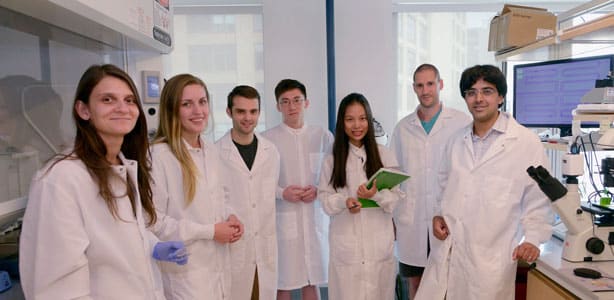The National Institutes of Health (NIH) has selected the laboratory of Dr. Rahul Satija, a core faculty member at the New York Genome Center (NYGC) and assistant professor of biology at NYU, for a coveted “New Innovator” Award to fund his research into how the interaction between molecular and environmental factors governs cell behavior. The grant of $2.76 million over five years is intended to enable Dr. Satija and his team to conduct in-depth investigation into what is known as cellular decision-making, the processes that govern factors determining the behavior and fate of single cells.
Dr. Satija said the award will provide his lab with newfound and ongoing ability to probe in arenas that may not have been practical previously. “The last few years have yielded incredible advances in the ability to sequence the molecular contents of single cells. This award will enable us to take advantage of these methods and to take risks while designing new ones, helping us to understand how cells function and behave.”
In his proposal to the NIH, Dr. Satija described the work as challenging because cells “decide” their fates based on both their inherent molecular structure and external factors, including both inherited tendencies based on their lineage, and chemical signals in their environment. To address this, Dr. Satija plans to develop an integrated computational framework to “simultaneously learn the transcriptome and metadata from thousands of single cells.” The work is intended to lead to the systematic deciphering of cell fate regulation during the development of the immune and nervous systems, and to understand how aberrant decision-making can lead to disease. Research mentioned within this release is supported by the National Human Genome Research Institute of the National Institutes of Health under Award Number DP2HG009623.
Throughout his career, Dr. Satija has been working to develop computational methods to analyze and interpret large genomic datasets. As a postdoc in Aviv Regev’s lab at the Broad Institute, he developed new methods to infer a cell’s spatial localization, subtype, and regulatory state based on its gene expression. He holds a BS in Biology and Music from Duke University, and obtained his PhD in Statistics from Oxford University as a Rhodes Scholar.
